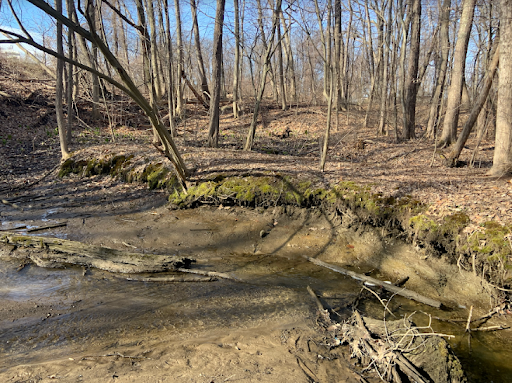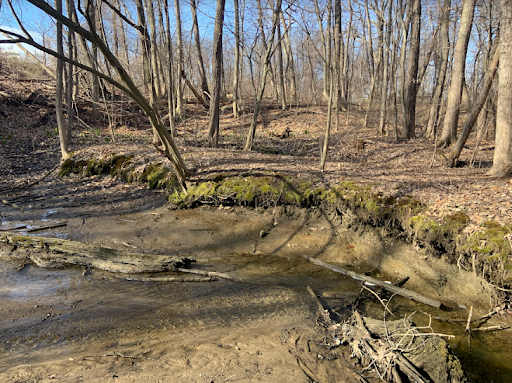Pentucket’s Latest Environmental Activities

Photo Source: Helen Burke
May 24, 2023
Pentucket has progressively become more involved with the environment surrounding its campus. Multiple classes have become more involved through hands-on learning experiences and working together to help the local environment thrive.
Who’s involved?
Alongside the Environmental Club, many classes involve themselves with the environment that surrounds Pentucket. Marine Biology, Freshwater Ecology, and Environmental Science classes all use various natural resources provided by our school.
What have they done?
Members of the Environmental Club have built an outdoor classroom behind the school decorated with colorful benches. The classroom is the midpoint to a trail that leads to Pentucket’s brook, which flows to the Merrimack River.
The Outdoor Classroom
To visit the outdoor classroom, take the following steps:
- Walk to the back of Pentucket High School along the bus route.
- Walk towards the red fire hydrant.
- Past the fire hydrant, you will see a path. Walk down that path.
- Walk down the stairs to the decorated benches. You’re now in the outdoor classroom.
Why Use the Outdoor Classroom?
Mr. Soule believes that “research around psychology, education, and the brain clearly suggests that heads-on learning and exposure to sunlight and green spaces improves our mood and capacity to learn.” With this ideology, his Freshwater Ecology classes utilize the outdoor classroom frequently as outdoor learning spaces can create a better learning environment.
Mr. Soule appreciates the benefits that the outdoor classroom has provided his classes. He uses the outdoor classroom on a nearly weekly basis for his Marine Biology and Freshwater Ecology classes. He believes that the “more time students spend outdoors makes it more likely that they will care about their local ecosystem…This is the ultimate goal of our class and field work.”
As the human mind relaxes when surrounded by nature, the outdoor classroom becomes a great spot for learning. Science classes use it for nature studies, but it makes for a great “sit spot” for literature courses.
Ms. Goodrich stated that “the outdoor classroom is for all the teachers.” Any teacher can bring their class to the outdoor classroom, weather permitting. If multiple classes intended to use it at the same time, then a sign-up sheet would be put in place to reserve times to use the outdoor classroom.
Watersheds
Watersheds consist of the land area that drains into a larger body of water, such as a river or an ocean. The health and cleanliness of a watershed directly affects the adjacent body of water and the ecosystems that live there.
Many environmental classes along with the Environmental Club are working on the nearby watershed. This is their current project because the “water quality of the Merrimack River and the Gulf of Maine is affected by activities that go on in the watershed.” Protecting the health of the Merrimack River is very important for the local environment’s health.
The Brook

The Brook is a creek that connects to the Merrimack River, carrying collected items from the schoolyard, from minerals to trash, into the Merrimack.
Rehabilitating The Brook
Pentucket has taken a forward-looking approach to rehabilitating the nearby brook, and they decided to rehabilitate the creek for numerous reasons.
The first reason they decided to rehabilitate the stream was to encourage the wildlife activity that lives there. There is currently a family of otters who live at this brook, and the environmental classes and club want to make the stream more friendly for them.
Ms. Goodrich, the leader of the Environmental Club, stated that another reason to reintegrate the creek is that “the brook is being overtaken by invasive species, reducing the biodiversity of both plants and animals. Non-native plants do not provide native insects and animals with the food that they need or will eat.”

Educational Factors from the Brook
Mr. Soule’s classes use the wetlands to study “stream morphology,” which is what makes up a wetland and the key parts of a stream. Some examples of what they look for include pools, banks, and riffles. They also gather data such as pH levels, temperature, and clarity. They do this to understand how the wetlands and streams support biodiversity.
They also do a project known as a “Leaf Pack,” where students identify aquatic insects they find at the stream, and use the macroinvertebrates to rate the health of our stream and the degree of biodiversity found.
These projects on the Pentucket campus also have a significant effect on the health of the stream and the Merrimack River. Our stream and our wetland are each one of hundreds of small creeks to be found along the Merrimack River. This helps students understand that each wetland impacts the health of many other wetlands and the health of everyone who uses it throughout the Gulf of Maine.
They will continue to remove any invasive species and utilize native wetland plants to “rewild” the area. Morrow’s Honeysuckle, which is abundant in the wetland, stops other plants from growing near it, so the Environmental Club wants to remove this plant to make room for others.
They will install signs identifying species and their benefits to habitats, demonstrate garden plantings by the upland part of the trail, and participate in a brook cleanup in the late spring, while science classes will be sampling, testing, and identifying plants.
Are Other Schools Involved With the Environment?
Many schools are involved with the environment that surrounds them. They compare their streams, watersheds, and biodiversity. Freshwater Ecology and Environmental classes taught by Mr. Soule are connected to other schools in Lockview, Nova Scotia, and in Kennebunk, Maine.
Students in Lockview utilize Black’s Brook which flows into the Shubenacadie Canal. Through this canal, the waters flow directly to the Cobequid Bay, emptying into the Minas Basin, and then to the Bay of Fundy, connecting to the Gulf of Maine. Students at Kennebunk High utilize the Mousam River, which flows into the Gulf of Maine.
These schools connect with Pentucket through the Gulf of Maine Institute, which provides Pentucket with these connections, along with grants and resources.
Final Statement
The groups involved with the environment enjoy benefiting the environment by encouraging biodiversity and the health of the Merrimack River. The surrounding communities appreciate these efforts and take similar measures for the prosperity of the river as well.

Shannon Christopher • May 21, 2024 at 10:23 am
I like that the author uses a teacher to educate us on the topic and specify why being outside is so important. She also provides good images so the reader can get a good handle on what the water sources look like in the area. I think talking about the projects that some of these classes do are also extremely helpful and help the reader understand why these classes are so important to Pentuckets environment. Overall this is a well written article and I enjoyed reading it!